How to Draw Things in Illustrator Doodle
"Focus on a style that you're most intrigued by. If you're a true beginner, there's no shame in just copying as much as possible. I started drawing by basically copying anime, and that's still very prevalent in how I draw now."
– Graphic Novel Writer and Artist Ethan Young
Key drawing skills for beginners.
Getting started with drawing can be a daunting prospect at first, especially if you haven't done anything more than a doodle for years. It's all about knowing how to see things in a certain light and developing your eye through careful observation. Remember, learning to draw is about improving your skills and familiarising yourself with the fundamentals.
1. Recognise edges, lines and angles.
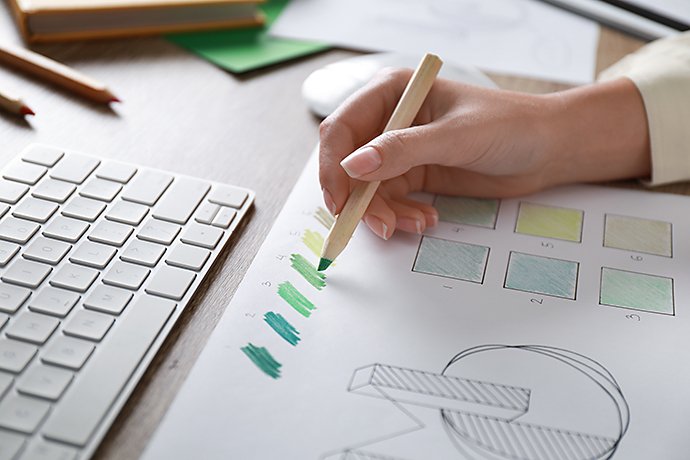
Break down what you see and want to draw into simple shapes. Everything in the physical world is made up of more than one shape and connecting lines, with an edge (or outline) and various angles that form the space between these different shapes.
Start with the rough edge of your subject. For example, if you're drawing a dog, its outline might fit into a rectangular shape. Then identify the secondary shapes – the ovals that make up its legs, body and head, and how they fit into this rectangle. Build a drawing of the dog by adding important lines and getting the angles right between each shape.
Pro tip: Divide long lines into shorter ones to draw a more accurate shape.
2. Understand proportion and perspective.

Getting the accuracy spot on in your drawing is all about proportion – recognising the size relationships between the objects and shapes in your creation. As you learn to draw, your eye for understanding proportions will improve.
Measuring techniques are essential before, during and after drawing – to correct mistakes related to proportions as you go. This is definitely easier when you're drawing from an image, as you can measure the length and width of your subject directly using the tip of your pencil and thumb. Mark out small lines for each reference point to keep the drawing in proportion.
Pro tip: Make a tick at the top and bottom marking the maximum length of your drawing.
3. Judge light and dark.
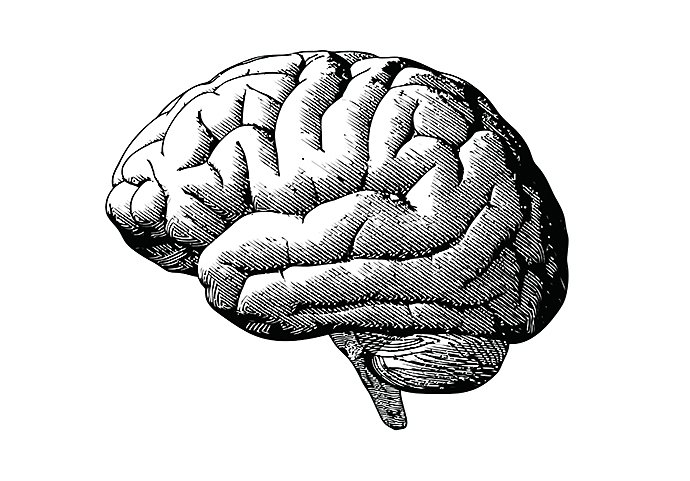
Some drawings are lighter or darker than others. Every drawing will have a different balance of shades – and knowing what this needs to be is key to learning how to draw. It adds texture and depth to your creations, transforming 2D into 3D.
Think about where the light shines on the subject and how this affects the shadows in your drawing. Then use different shading techniques to reflect this, whether you are working with just a standard HB pencil or coloured pencils.
Pro tip: Choose the best shading technique for your subject and consider combinations where relevant.
4. Use the right drawing equipment.
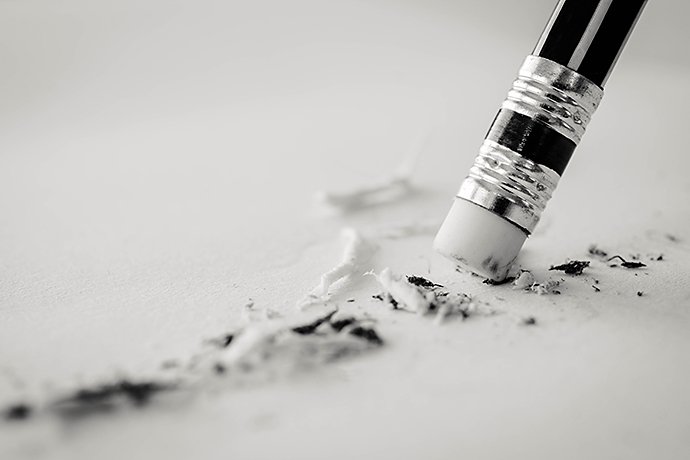
The great thing about being a beginner in drawing is you only need:
- A HB pencil
- Sketching paper
- An eraser
- Pencil sharpener
As you learn and develop, experiment with pastel or coloured pencils – even ink, chalk and brush pens can add a splash of colour to your drawings. A drawing board or easel can help if you find it easier to stand up as you work.
Digital drawing tools like Photoshop Sketch are great for drawing practise on the go too, providing access to many different tools for your creations on your smartphone or tablet.
Pro tip: Try a range of graphite pencils to see which best suits your drawing style.
5. Choosing the right platform.

When using digital drawing tools, the brush harshness, size and opacity will affect your work. There is no single rule to obey, so experiment with different settings. A small but hard brush size is good for sketching and achieving a clean look. If blending, go down the opposite route.
Pro tip: Draw the same subject using different brush settings to understand how they impact the outcome.
"Draw what's in front of you. No matter what you do, your act of trying to capture what's in front of you will help. Every single bit of effort counts. There is no such thing as wasted effort in drawing."
Editorial Artist Chris Kindred
Ideas for choosing what to draw.
Whether it's a fellow commuter on the train or an eye-catching flower in the park, you're surrounded by objects to use as you hone your drawing skills. Start small before learning how to draw Manga or attempting another more advanced style. Here are four examples of what to draw if you're a beginner:
- Birds
- Caricatures
- Hands
- Feet

Trying to pass off the work of another artist as your own is plagiarism. However, emulating the style of accomplished illustrators is an observational exercise that can enhance your drawing skills. While you might not perfect it straight away, it can improve your artistic vision.
If you want to stick with original work, flowers with a simple shape (like roses and daisies) are a good place to start – as are city skylines that rely on many straight lines and angles. Find inspiration with some of these easy drawings for beginners.
Birds.
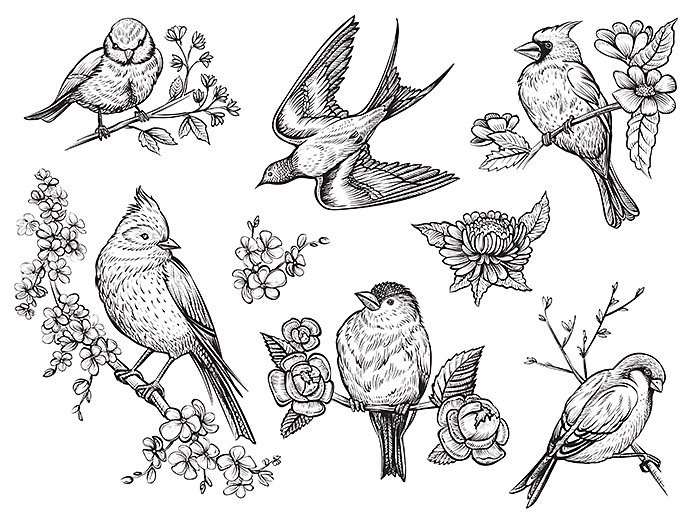
Of all the things beginners can draw, birds are one of the most varied. They come in different colours, shapes and sizes, which makes them exciting to draw when starting out. Find an image to copy rather than trying to sketch your pet budgie or a bird in your garden.
While you may think birds are a complex subject, most can be deconstructed to a teardrop shape for the main body – with circles, triangles and rectangles making up the rest of their features. From here you can add in more detail, colour and texture to reflect their feathers.
Discover how to draw birds.
Caricatures.

Creating realistic sketches of your friends and family can be a daunting task which requires a lot of practise. But caricatures are among the most fun drawing ideas for beginners.
Caricatures focus on one unique feature and exaggerate it for comedic effect. To do this you'll have to work out where your focal point should be – and this can help you develop your artistic eye. This simplistic cartoon style relies on lines and is a great opportunity to put your own mark on your creations.
Discover how to draw caricatures.
Hands.
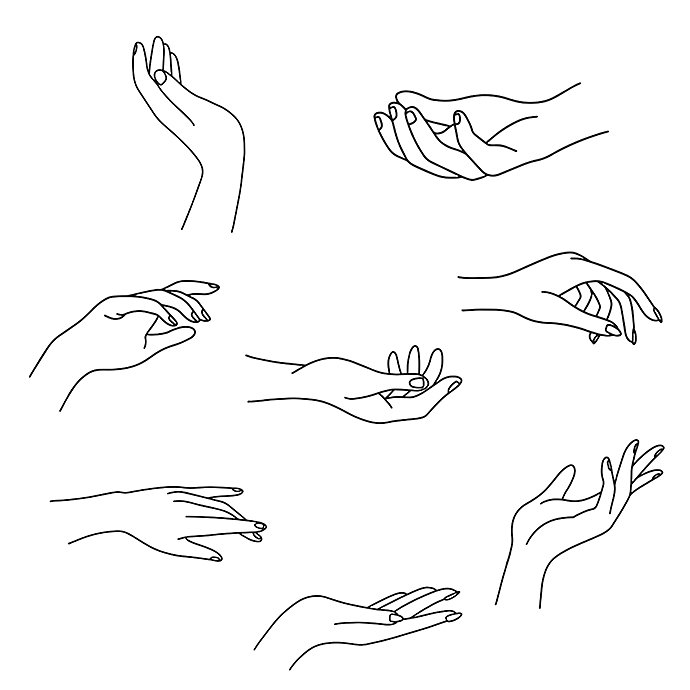
You might think your face is the most expressive part of your body – but hands can often convey a message better than words, so they can be fun to draw too.
Always use a reference – whether it's a photo or an actual hand – and break down the bones and knuckles into individual shapes before adding detail such as wrinkles and nails.
Discover how to draw hands.
Feet.

Of all the doodles you draw of people's features, it's the feet which are most difficult to get right. There are lots of bones and curves, with feet appearing at different angles depending on whether the person is stood still or walking.
Again it comes down to proportional accuracy. To improve your feet drawing skills, practise drawing different sizes of feet (close-ups and as part of a full caricature) and wearing different or no footwear.
Discover how to draw feet.
"Beginner artists seem to think 'if I use reference, I'm cheating.' There's this weird mentality surrounding copying. Every working professional artist I know uses tons of reference. If you reference something enough times, you build muscle memory so you're able to just draw without reference. But when you're first starting out, pulling reference images or observing things in real life is super helpful."
Illustrator and Comic Artist Jen Bartel
Step-by-step guide to drawing.
Even if you've practised drawing some simple shapes and have an idea of what you want to draw, it can still be hard to know where to start. Do you begin drawing the top of the subject or the bottom? To get started, follow these ideas of things to draw step-by-step.
Flowers.
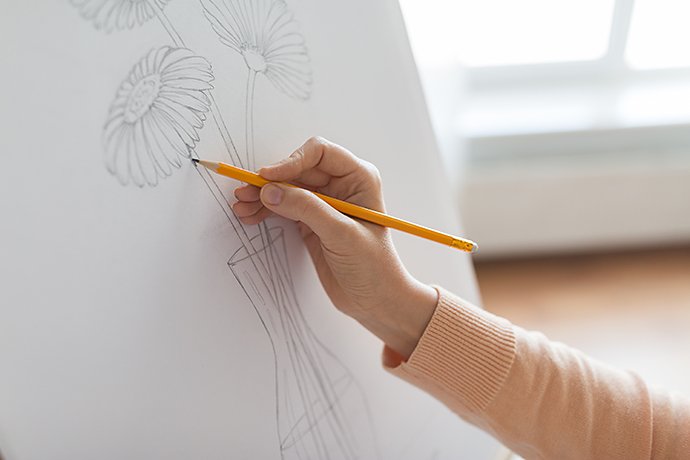
- Start with a straight line for the stem, dividing it into a lot of short lines to avoid it bending.
- Connect it with a small circle at the top, only touching the paper lightly.
- Add the petals by using short lines – the more curves, the more little lines.
- Do the same for any leaves coming off the stem.
- Go over all the little lines with a marker or pressing your pencil harder to define the shape.
- Inject some colour, extra detail or leave as it is for a simple flower drawing.
"Try to draw the longest lines you can without assistance – abandon the ruler. That way you build confidence in what you're drawing."
Editorial Artist Chris Kindred
Faces.
Faces are one of the hardest things to draw for beginners, but these simple steps can help you avoid some common mistakes.
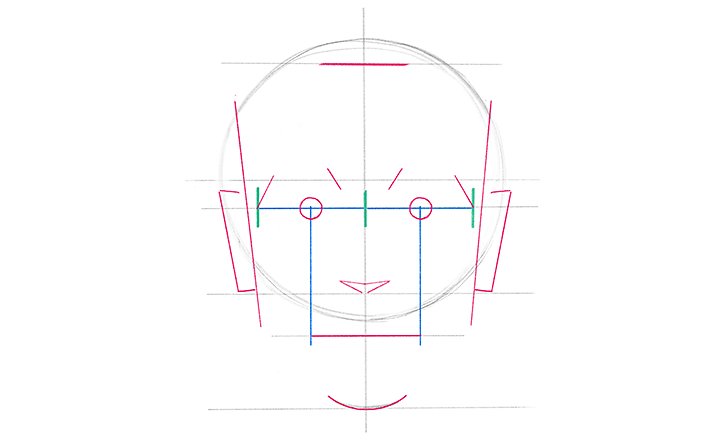
- Start with a circle and split the face into thirds – hairline to eyebrows, eyebrows to bottom of the nose, bottom of the nose to the bottom of the jaw.
- Use horizontal lines to show these divides, with vertical lines for where the eyes, ears, mouth and nose will go.
- Check the distances and proportions seem right. Erase and rework if necessary.
- Use small circles for the pupils of the eyes, adding curves for the rest.
- Embellish the features and hairline with lots of small lines at first to get the curvature of the lips and nose on point.
"A lot of what people point to with my artwork is faces, but that used to be a thing that I didn't like drawing at all. I started doing a lot of exercises where I focused on drawing different facial features and different facial expressions. It definitely helped me develop how to draw faces and make it less painful."
Artist Mildred Louis
Snakes.
Snakes may not be top of your list of things to draw step-by-step, but they're a useful subject to build on. They're great to practise drawing to free your hand and improve your ability to draw other animals (including humans and accurately capturing the movement and bends in different body parts). Here's how to draw a snake:
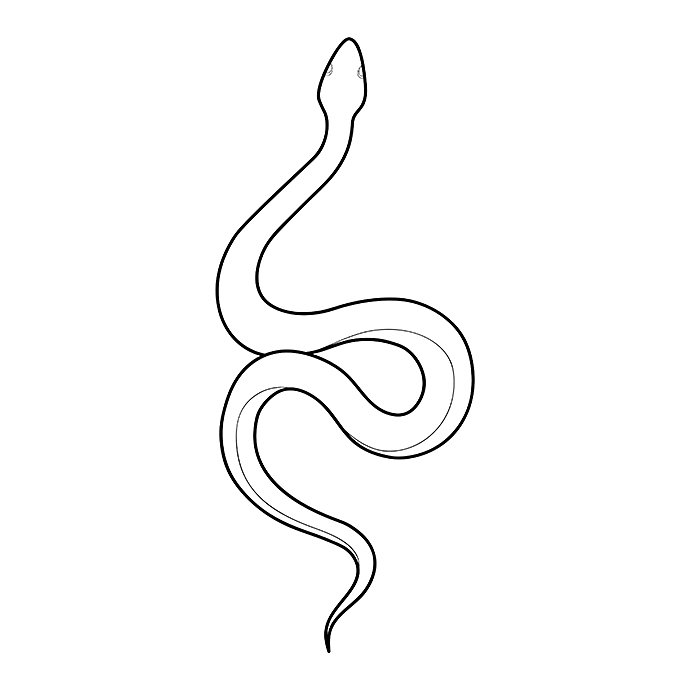
- Draw a row of circles descending in size from left to right.
- Connect them with a small line between each and you have a sleeping snake.
- Again, draw the same sized circles but change their positions vertically and leave bigger spaces between them.
- Connect the circles with arches, which will be trickier but becomes easier with practise.
- Repeat to improve the motion.
- Add in details like eyes, tongue and colour or use the same technique to draw body parts, such as a horse's bent back leg.
"Do life drawing. A lot of cities and colleges offer classes to the public that are actually really cheap. It's a good idea to understand what goes into building that structure. The more you understand proportions, the better you can mess around with them if you want to go super stylistic or more realistic — build that basic foundation first."
Artist Mildred Louis
How to practise drawing.
There's no avoiding it – knowing how to draw things takes practise. Putting in the time to get over the beginner hump can be tough. If you have the passion and commitment for repetitive drawing practise, you can take your knack for scribbling in the margins and transform it into something else.
As with going to the gym, growing your creative muscles can feel repetitive, but that repetition builds on itself. It's important to go beyond what comes naturally and get out of your comfort zone, too.
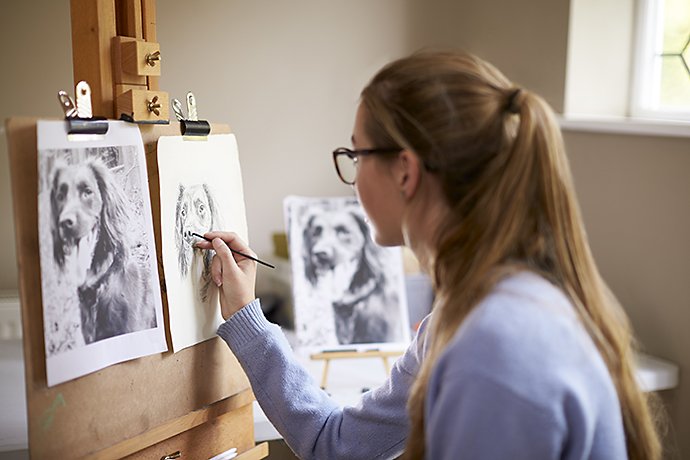
Make sure you're topping up your drawing skills by:
- Always carrying a notepad and pencil - this way you can draw on the daily commute, at lunch, taking a break on a walk.
- Downloading Photoshop Sketch – create drawings on your smartphone or tablet wherever you are with these digital drawing tools.
- Freeing up ten minutes every day – before you go to bed, after eating or at any convenient point, dedicate ten minutes to small sketches.
- Doodling on your phone – where appropriate, practise simple shapes or doodles as you talk to a friend, family member or colleague on the phone.
- Setting some goals – whether it's drawing a caricature of your friend by the end of the month or finishing that first comic book draft, having a concrete goal can ensure you maintain the drive to improve.
While working to improve in places will round out your skill, remember that practising drawing is a means to an end – creating art you can be proud of.
"At first, because things don't always come naturally, it can be discouraging and frustrating. But that's always how it goes when you're learning something new. So just practise, practise, practise and don't give up."
Illustrator and Comic Artist Jen Bartel.
Drawing resources and inspiration.
Go from sketch to digital painting.
French art nouveau and comic artist Lois van Baarle walks you through the stages of creating a digital painting.
How to Draw Things in Illustrator Doodle
Source: https://www.adobe.com/uk/creativecloud/illustration/discover/learning-to-draw.html
0 Response to "How to Draw Things in Illustrator Doodle"
Post a Comment